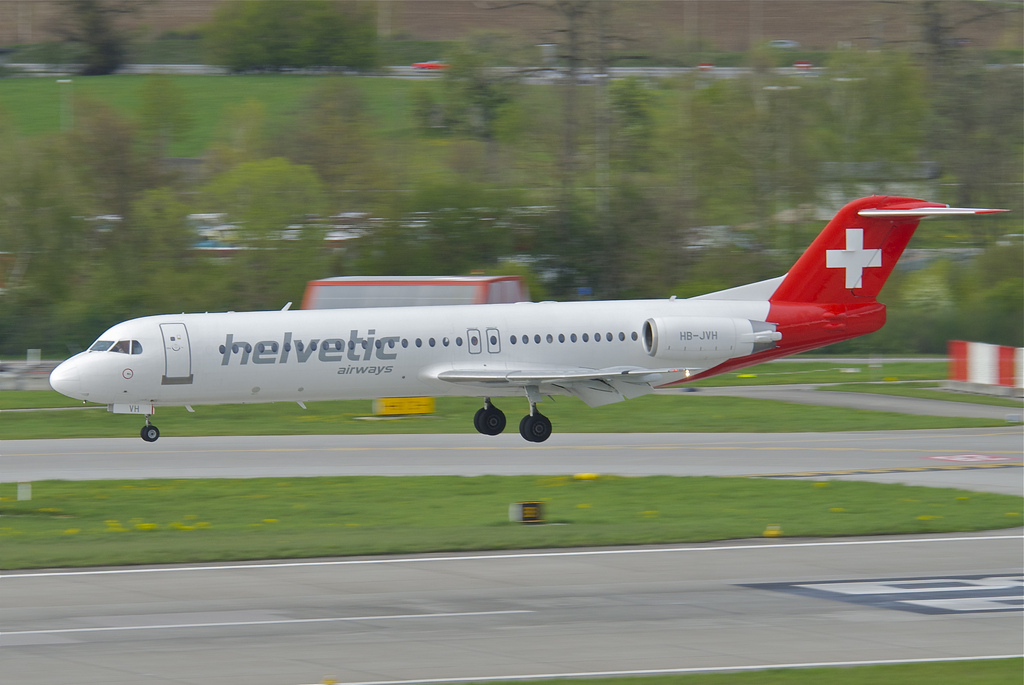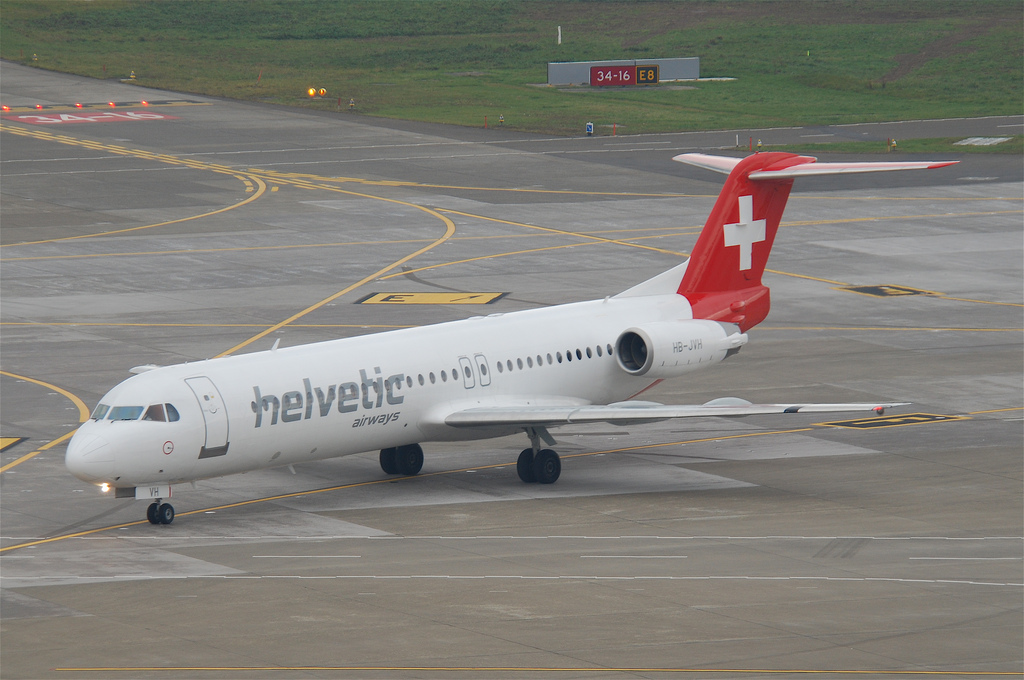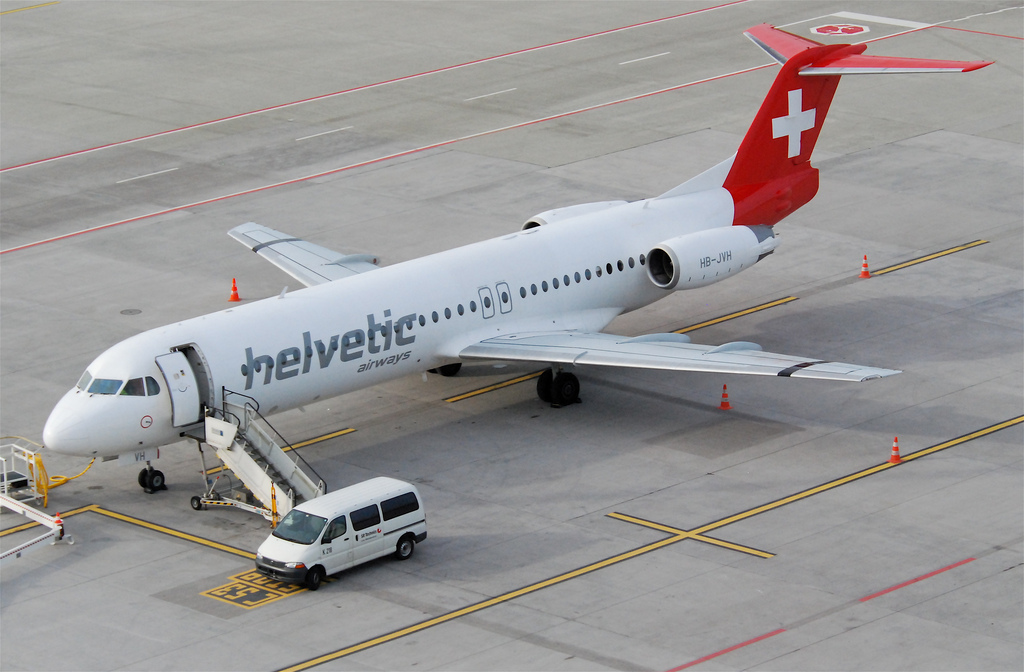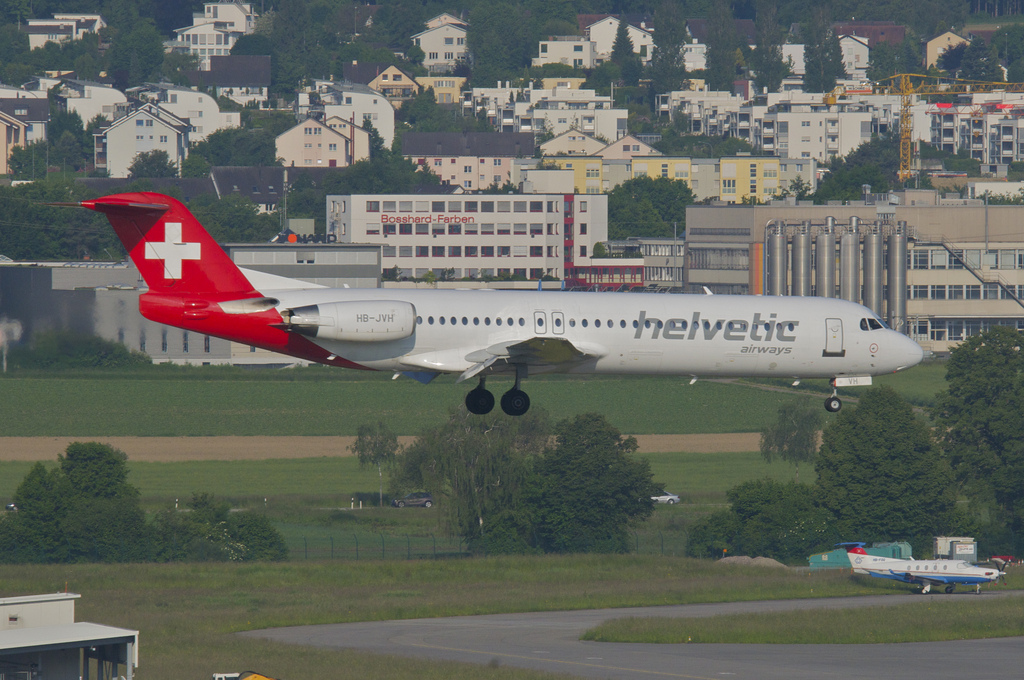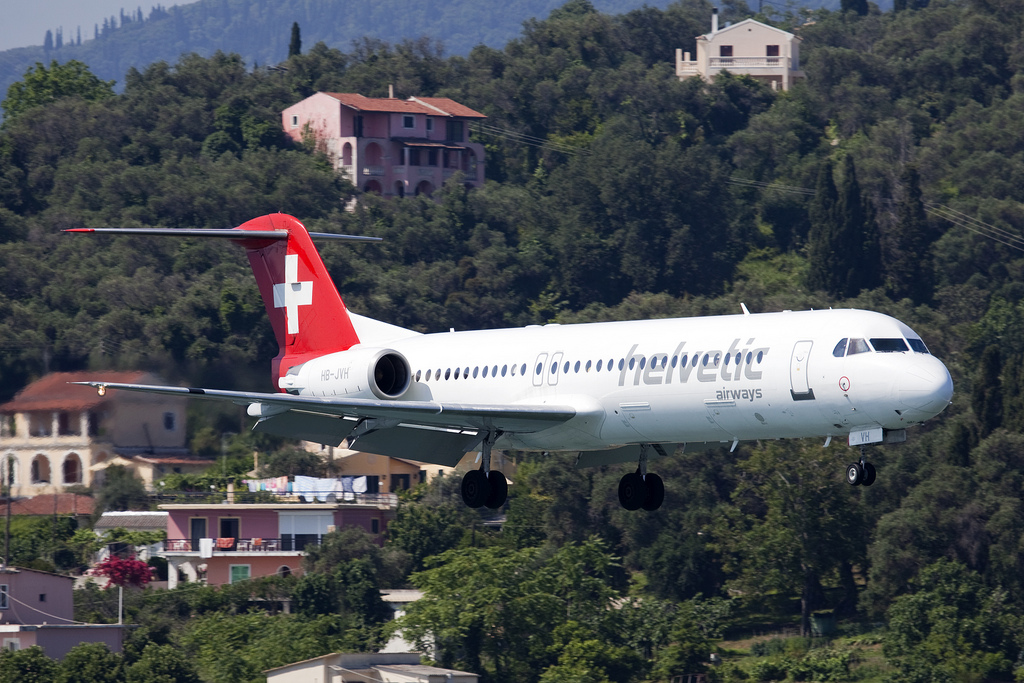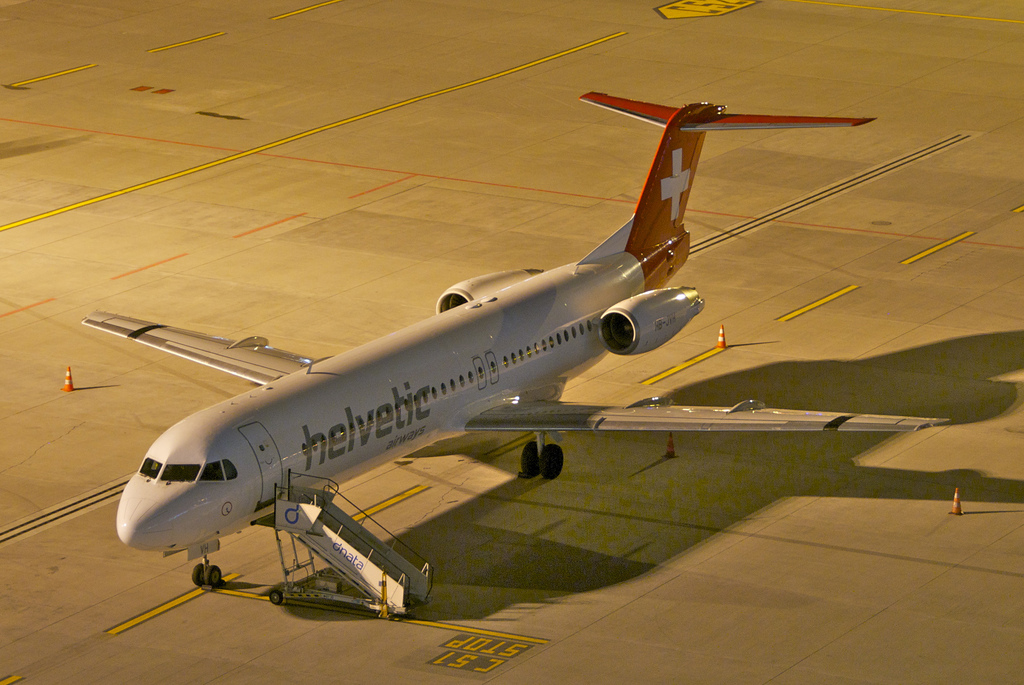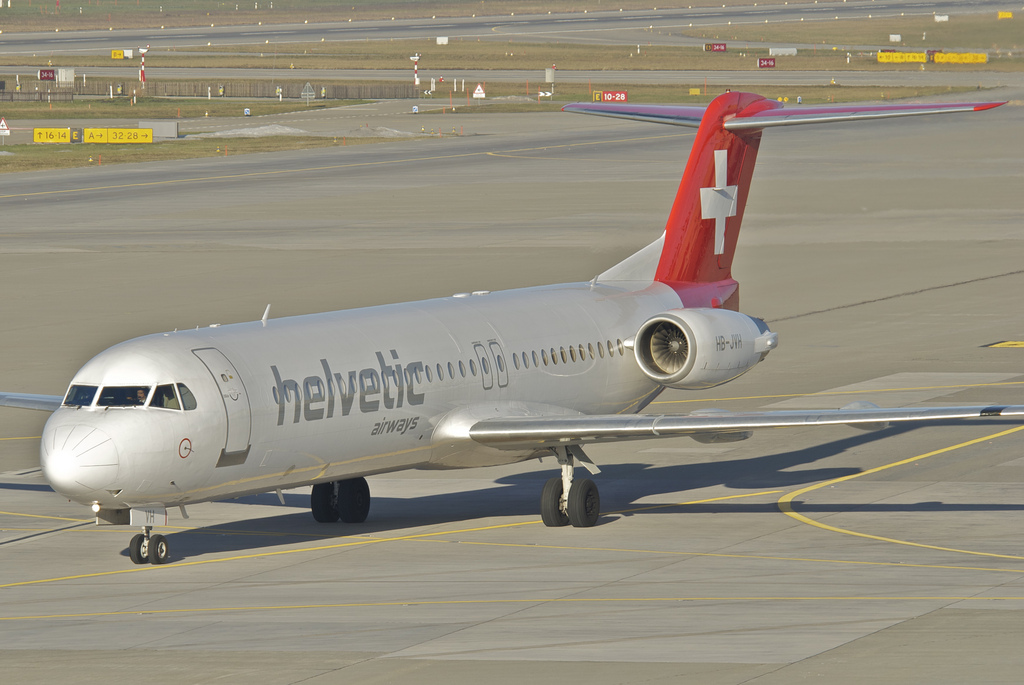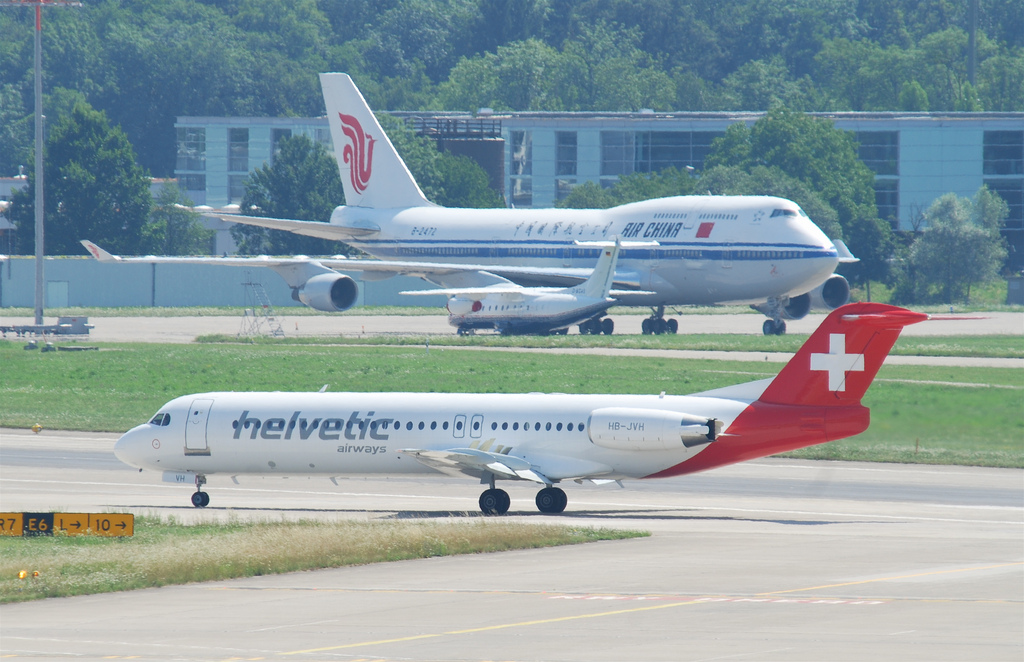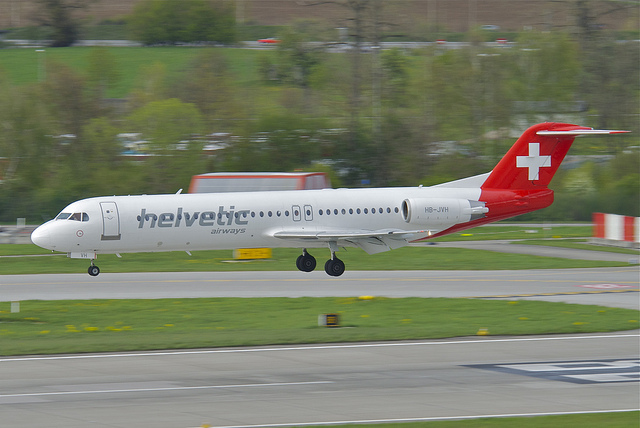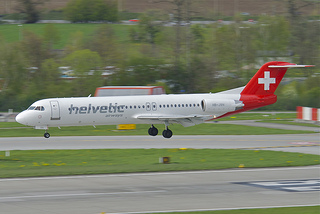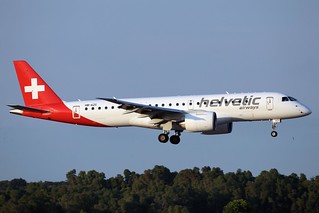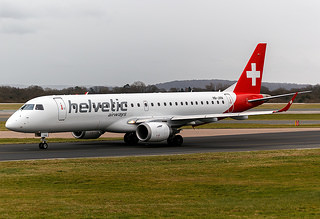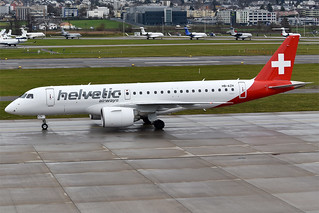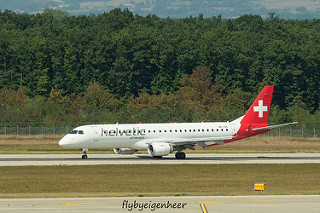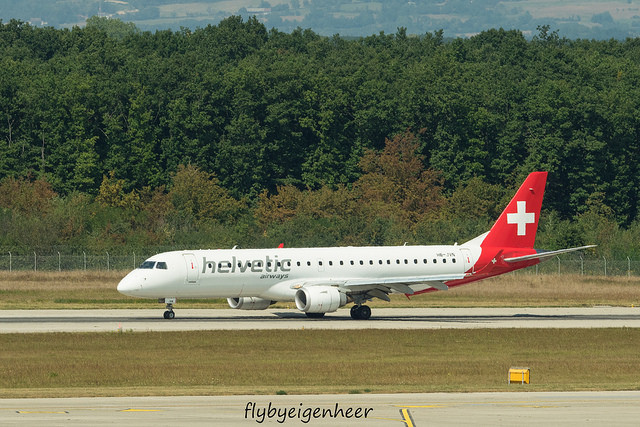Helvetic F100 near Zurich on Jul 15th 2013, smoking oven
Last Update: August 31, 2015 / 13:42:46 GMT/Zulu time
Incident Facts
Date of incident
Jul 15, 2013
Classification
Incident
Airline
Helvetic
Flight number
2L-440
Departure
Zurich, Switzerland
Destination
Bristol, United Kingdom
Aircraft Registration
HB-JVH
Aircraft Type
Fokker 100
ICAO Type Designator
F100
The flight was cancelled, the passengers were rebooked onto other flights.
The airline confirmed the aircraft returned due to a smoke in the cockpit due to a smoking oven, the cause of the smoke is being investigated, Switzerland's SUST have opened an investigation.
On Jul 17th 2013 the SUST reported in a preliminary brief that the aircraft was climbing out of Zurich when smoke emanated from a galley oven and entered the cockpit. The crew decided to return to Zurich. After turning the galley oven off the smoke ceased. A short time later there was smoke in the cockpit again prompting the crew to don their oxygen masks, the smoke stopped after some time. The aircraft landed without further incident, the passengers disembarked normally.
On Aug 31st 2015 the SUST released their final report concluding the probable causes of the serious incident were:
The serious incident is attributable to smoke generation during the flight. This was due to the fact that an exposed heating element came into contact with a plastic film in an oven.
The following factors were identified as the direct cause:
- A plastic film was mistakenly left in the oven.
- The oven was switched on with an inappropriate tray rack without a rear panel.
The following factor was identified as the systemic cause:
- The persons concerned were not aware that two oven types requiring different tray racks were in use.
Although the following factor did not directly cause the serious incident, in the context of the investigation it was identified as a risk factor:
- The principles for combating smoke generation or a fire in the oven were not followed.
- The flight crew and the fire brigade were only able to communicate by calling because they were not on a common radio frequency.
The SUST reported that the aircraft was climbing out of Zurich being cleared to climb to FL220 when the ovens were switched on to preheat the food. A short time later the lead flight attendant noticed smoke coming from oven #2 in the galley at the front of the cabin. When he opened the oven he was confronted with a cloud of smoke, white smoke began to become visible in the cockpit arriving from the back. The lead flight attendant turned off oven and all other galley equipment, the flight attendant believed from the smell it was an electrical defect.
Climbing through FL190 the flight crew noticed the white smoke developing in the cockpit from the back, called the lead flight attendant, who explained oven #2 emitted smoke. The flight crew instructed the flight attendant to trip the related oven circuit breaker, the flight attendant subsequently determined the oven was no longer producing smoke.
The flight crew continued the climb to FL220, advised Air Traffic Control and decided to return to Zurich as a precaution. A short time later white smoke appeared again in the cockpit for a brief period, the flight crew decided to don their oxygen masks without smoke goggles and worked the electrical smoke emergency checklist also believing from the smell, the smoke was of electrical origin. As result of working the checklist various displays and system were out of service, the commander (38, ATPL, 6,758 hours total, 6,510 hour on type) assumed manual control of the aircraft without autopilot being available while the first officer (29, CPL, 460 hours total, 138 hours on type) performed radio communication.
The aircraft landed on Zurich's runway 16 and taxied to the apron with emergency services following the aircraft. At the stand emergency services examined the aircraft and the oven using thermal imaging with no heat concentrations being detected, there was no damage to the aircraft except to oven #2.
The SUST analysed with respect to smoke generation:
As the investigation indicated, neither the cabin crew nor the companies that supplied the food were aware that there were two different oven types on the Fokker 100 aircraft type at Helvetic Airways. In contrast to other ovens, oven no. 2, which was used on HB-JVH, had no rear cover plate, and should therefore have been operated with a special tray rack featuring a rear wall. The cabin crew was of the opinion that the rear cover plate had been missing for "a long time". This indicates that they were not familiar with this distinction.
The inspection of the oven before operation was not complete: neither the rear cover plate to protect the heating element nor the appropriate tray rack were present and obviously a film was still located in the oven. This was not discovered and the inappropriate rack may not have been recognised as a safety risk due to lack of knowledge about the different types of ovens.
With respect to the crew responses the SUST analysed: "The cooperation between the flight crew and cabin crew was good and though the action to combat the smoke was successful, it was only partially appropriate. Opening an oven door after the onset of smoke generation inside the oven is dangerous. It can lead to a large amount of smoke being emitted and an oven fire being supplied with oxygen. The principles stipulated by the aviation operator for combating fire specified actions that would have been effective in this case, but these were not followed." and continuted: "The use of the electrical smoke emergency checklist is understandable due to the smell of a short circuit or electrical defect and smoke generation. It is also logical from the perspective of the flight crew, because the smoke did not enter the cockpit via the ventilation ducts. Only later was it possible to determine that the smoke stemmed solely from the oven and that the cabin equipment smoke emergency checklist would therefore have been more appropriate. The measures according to this checklist interrupt only the power supply to the galley. The aircraft control and displays in the cockpit would not have been restricted. As various past cases demonstrate, using the smell of smoke to identify the source of smoke is often misleading. ... The crew, however, had to assume an unknown source and therefore logically decided to abort the flight and an make an unscheduled landing."
Aircraft Registration Data
Incident Facts
Date of incident
Jul 15, 2013
Classification
Incident
Airline
Helvetic
Flight number
2L-440
Departure
Zurich, Switzerland
Destination
Bristol, United Kingdom
Aircraft Registration
HB-JVH
Aircraft Type
Fokker 100
ICAO Type Designator
F100
This article is published under license from Avherald.com. © of text by Avherald.com.
Article source
You can read 2 more free articles without a subscription.
Subscribe now and continue reading without any limits!
Read unlimited articles and receive our daily update briefing. Gain better insights into what is happening in commercial aviation safety.
Send tip
Support AeroInside by sending a small tip amount.
Related articles
Helvetic F100 at Zurich on May 14th 2017, rejected takeoff due to disagreeing airspeed
A Helvetic Airways Fokker 100 on behalf of Swiss, registration HB-JVH performing flight LX-788 from Zurich (Switzerland) to Brussels (Belgium), was…
Helvetic F100 at Zurich on May 14th 2017, rejected takeoff due to disagreeing airspeed
A Helvetic Airways Fokker 100 on behalf of Swiss, registration HB-JVH performing flight LX-724 from Zurich (Switzerland) to Amsterdam (Netherlands),…
Helvetic F100 near Berne on May 24th 2012, loss of separation with a helicopter
A Helvetic Fokker 100, registration HB-JVH performing flight 2L-5311 from Kos (Greece) to Berne (Switzerland), was on approach to Berne when a loss…
Helvetic E195 at Zurich on May 22nd 2025, flaps problem
A Helvetic Airways Embraer ERJ-195 on behalf of Swiss, registration HB-JVA performing flight LX-1019 from Dusseldorf (Germany) to Zurich…
Helvetic E290 at Zurich on Jan 28th 2024, hydraulic problems
A Helvetic Embraer ERJ-190-E2 on behalf of Swiss International Airlines, registration HB-AZC performing flight LX-1664 from Zurich (Switzerland) to…
Helvetic E190 at Luxembourg on Nov 16th 2023, gear problem
A Helvetic Embraer ERJ-190 on behalf of Swiss, registration HB-JVM performing flight LX-754 from Zurich (Switzerland) to Luxembourg (Luxembourg), was…
Helvetic E290 near Zurich on Apr 14th 2023, hydraulic problem
A Helvetic Airlines Embraer ERJ-190-E2 on behalf of Swiss, registration HB-AZH performing flight LX-1418 from Zurich (Switzerland) to Belgrade…
Helvetic E190 near Zurich on Dec 12th 2022, loss of cabin pressure
A Helvetic Embraer ERJ-190 on behalf of Swiss International Airlines, registration HB-JVN performing flight LX-1487 from Prague (Czech Republic) to…
Newest articles
The GPS Problem No One Wants to Discuss in 2026
GPS is widely perceived as a solved problem. It works, it’s global, and it underpins everything from smartphones to financial systems. Yet in…
Commute ERJ145 at Washington on Jan 12th 2026, engine shut down in flight
A Commute Air Embraer ERJ-145 on behalf of United, registration N13124 performing flight UA-4295 from Washington Dulles,DC to Mobile,AL (USA) with 43…
Subscribe today
Are you researching aviation incidents? Get access to AeroInside Insights, unlimited read access and receive the daily newsletter.
Pick your plan and subscribePartner

ELITE Simulation Solutions is a leading global provider of Flight Simulation Training Devices, IFR training software as well as flight controls and related services. Find out more.
SafetyScan Pro provides streamlined access to thousands of aviation accident reports. Tailored for your safety management efforts. Book your demo today
AeroInside Blog
Popular aircraft
Airbus A320Boeing 737-800
Boeing 737-800 MAX
Popular airlines
American AirlinesUnited
Delta
Air Canada
Lufthansa
British Airways
